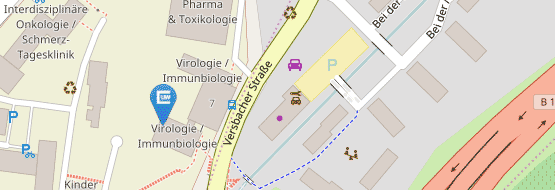Ausgewählte Publikationen
Ausgewählte Publikationen:
1) Na, S. Y., Eujen, H., Gobel, K., Meuth, S. G., Martens, K., Wiendl, H., and Hunig, T. (2009). Antigen-specific blockade of lethal CD8 T-cell mediated autoimmunity in a mouse model of multiple sclerosis. J Immunol 182, 6569-6575.
2) Beyersdorf, N., Ding, X., Blank, G., Dennehy, K. M., Kerkau, T., and Hunig, T. (2008). Protection from graft-versus-host disease with a novel B7 binding site-specific mouse anti-mouse CD28 monoclonal antibody. Blood 112, 4328-4336.
3) Gogishvili, T., Elias, F., Emery, J. L., McPherson, K., Okkenhaug, K., Hunig, T., and Dennehy, K. M.(2008). Proliferative signals mediated by CD28 superagonists require the exchange factor Vav1 but not phosphoinositide 3-kinase in primary peripheral T cells. Eur J Immunol 38, 2528-2533.
4) Na, S. Y., Cao, Y., Toben, C., Nitschke, L., Stadelmann, C., Gold, R., Schimpl, A., and Hunig, T. (2008). Naive CD8 T-cells initiate spontaneous autoimmunity to a sequestered model antigen of the central nervous system. Brain 131, 2353-2365.
5) Hunig, T. (2007). Manipulation of Regulatory T-Cell Number and Function with CD28-Specific Monoclonal Antibodies. Adv Immunol 95, 111-148.
6) Dennehy, K. M., Elias, F., Zeder-Lutz, G., Ding, X., Altschuh, D., Luhder, F., and Hunig, T. (2006). Cutting edge: monovalency of CD28 maintains the antigen dependence of T cell costimulatory responses. J Immunol 176, 5725-5729.
7) Evans, E. J., Esnouf, R. M., Manso-Sancho, R., Gilbert, R. J., James, J. R., Yu, C., Fennelly, J. A., Vowles, C., Hanke, T., Walse, B., Hunig, T., and Davis, S. (2005). Crystal structure of a soluble CD28-Fab complex. Nat Immunol 6, 271-279.
8) Kerstan, A., and Hunig, T. (2004). Cutting edge: distinct TCR- and CD28-derived signals regulate CD95L, Bcl-xL, and the survival of primary T cells. J Immunol 172, 1341-1345.
9) Lin, C.-H., and Hunig, T. (2003). Efficient expansion of regulatory T-cells in vitro and in vivo with a CD28 superagonist. Eur J Immunol 33, 626-638.
10) Luhder, F., Huang, Y., Dennehy, K. M., Guntermann, C., Muller, I., Winkler, E., Kerkau, T., Ikemizu, S., Davis, S. J., Hanke, T., and Hunig, T. (2003). Topological requirements and signaling properties of T cell-activating, anti-CD28 antibody superagonists. J Exp Med 197, 955-966.
11) Elflein, K., Rodriguez-Palmero, M., Kerkau, T., and Hunig, T. (2003). Rapid recovery from T lymphopenia by CD28 superagonist therapy. Blood 102, 1764-1770.
12) Wolf, M., Schimpl, A., and Hunig, T. (2001). Control of T cell hyperactivation in IL-2-deficient mice by CD4(+)CD25(-) and CD4(+)CD25(+) T cells: evidence for two distinct regulatory mechanisms. Eur J Immunol 31, 1637-1645.
13) Tacke, M., Hanke, G., Hanke, T., and Hunig, T. (1997). CD28-mediated induction of proliferation in resting T cells in vitro and in vivo without engagement of the T cell receptor: evidence for functionally distinct forms of CD28. Eur J Immunol 27, 239-247.
14) Hünig, T., and Mitnacht, R. (1991). T cell receptor-mediated selection of functional rat CD8 T-cells from defined immature thymocyte precursors in short-term suspension culture. J Exp Med 173, 561-568.
15) Hünig, T., Tiefenthaler, G., Meyer zum Büschenfelde, K.-H., and Meuer, S. C. (1987). Alternative pathway activation of T-cells by binding of CD2 to its cell-surface ligand. Nature 326, 298.
16) Hünig, T., and Bevan, M. J. (1981). Specificity of T-cell clones illustrates altered self hypothesis. Nature (London) 294, 460.
17) Hünig, T. (1985). The cell surface molecule recognized by the erythrocyte receptor of T-lymphocytes. Identification and partial characterization using a monoclonal antibody. J Exp Med 162, 890.


